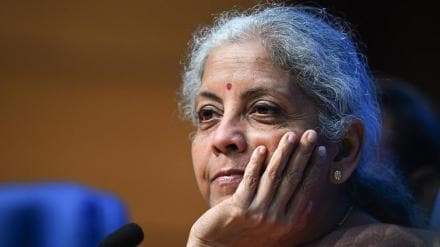The Union Budgets in the last decade have been characterised by fiscal prudence, transparency, and inclusiveness, ensuring investments in social development and infrastructure, Finance Minister Nirmala Sitharaman said on Monday. In a long-thread of posts on X, the finance minister said that the Narendra Modi government has reshaped the budget from a mere record of expenditures into a “strategic blueprint” for “equitable development”.
The minister’s comments comes at a time when, if voted back to power, the NDA government would be presenting the full Budget for FY25 in July, amid the added comfort of buoyant tax revenues and a record-high dividend transfer by the RBI. While subdued rural consumption may, according to some analysts, require fiscal push, the weakness of the private capex and the funding gaps being witnessed in the infrastructure sectors, make it necessary to sustain the public capex momentum. At the same time, the ruling BJP has refrained from committing on any new large welfare or income transfer schemes in its manifesto, in contrast to the Opposition Congress party.
“The last decade has witnessed a substantial improvement in the sanctity and credibility of the Union Budget, leaving past constraints and archaic practices behind,” she said. “We make judicious & efficient use of every rupee collected from our taxpayers and give them a transparent picture of public finances.”
Sitharaman said that the advancement of the Budget cycle to February 1 from the last working day of the month has effectively advanced the expenditure cycle by 2 months.
Prior to this reform, the authorization from Parliament through ‘vote-on-account’ was available only for the first 2 months of the financial year. Now, the entire budgetary exercise, including the legislative process, is completed well before the start of the financial year.
“This has improved administrative efficiency and delivery of schemes as ministries have the full budget available from the beginning of the financial year,” the finance minister said, while adding that even states are now able to plan their own budgets better as they are now aware of details of the Centre’s fiscal plan for the upcoming year.
The FM further said that the present government has prioritised transparency in Bugdeting practises, which starkly contrasts the Congress-led UPA government’s repetitive practice of hiding the deficits through off-budget borrowings and issuance of ‘Oil Bonds’, which “somewhat covertly shifted” the fiscal burden to future generations.
“Under UPA, standard fiscal practices were routinely changed to make Budget numbers look favourable,” she said.
She further said that the Centre administers 108 Centrally Sponsored Schemes (CSS) through State and UT governments, with a budget of approximately Rs 5.01 trillion for FY25 and Rs 4.76 trillion for FY24.
Previously, it was challenging to ascertain the timeliness and amount of funds released to the implementing agencies under a CSS and to determine whether the funds were from the Centre or the State. Under the SNA (Single Nodal Agency) model, each state has to identify and designate a SNA for every CSS.
State governments are required to transfer the CSS funds received from the Centre and their corresponding share within a stipulated period to the single nodal bank account opened in a scheduled commercial bank. The SNA then creates virtual spending limits for the down-the-line agencies to incur expenditures against the particular scheme. Money in a single nodal bank account also earns interest. “Interest accrued in SNA bank accounts has resulted in savings of approximately Rs. 10,592 crores from 2021-22 to date,” Sitharaman highlighted.
On Treasury Single Account (TSA), the FM said that the reform has led to savings of more than Rs 15,000 crore to date.
The TSA reform, rolled out in FY18, was introduced to eliminate bulk released to autonomous bodies (ABs). Previously, grants were released to various ABs and implementing agencies periodically (quarterly or half-yearly), leading to funds remaining unutilized for a long time and resulting in substantial interest costs for the Centre.
ABs now open accounts with RBI, and Ministries issue e-assignments (limits) through ‘PFMS-e-kuber’ interface instead of releasing cash. The ‘PFMS-e-kuber’ interface is used to disburse and spend funds. This led to ‘just-in-time’ release of funds to Autonomous Bodies and lowered the borrowing costs for the Centre.
TSA has covered over 3000 Implementing agencies and a total of around Rs. 5 trillion of Union Budget till FY 2023-24. It is important to mention that even the large agencies such as ICMR, UGC, BSNL, NHAI etc., are receiving funds from the government through TSA.
